The Wupatki National Monument, near Flagstaff, AZ, is a great destination to explore if you love ancient history like Erin and I do. In the Wupatki National Monument, you get to walk amongst the ancient Pueblos to gain an understanding and appreciation of how the ancient Native American communities lived and thrived in this environment. Visit Wupatki National Monument and you won’t be disappointed!!
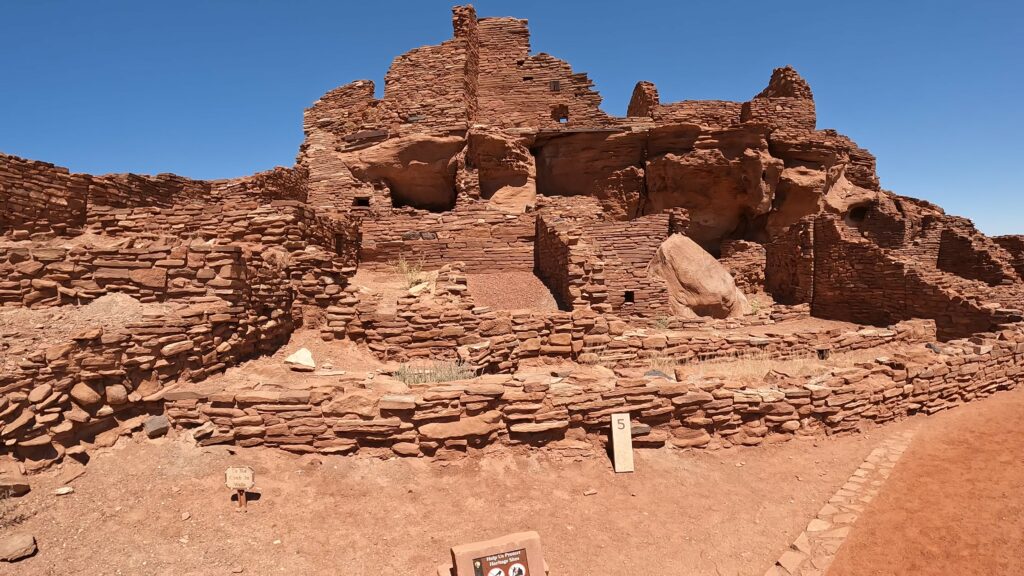
What is the History of the Wupatki National Monument?
In 1924, President Calvin Coolidge established Wupatki as a national monument, and was listed on the National Register of Historic Places on October 15, 1966.
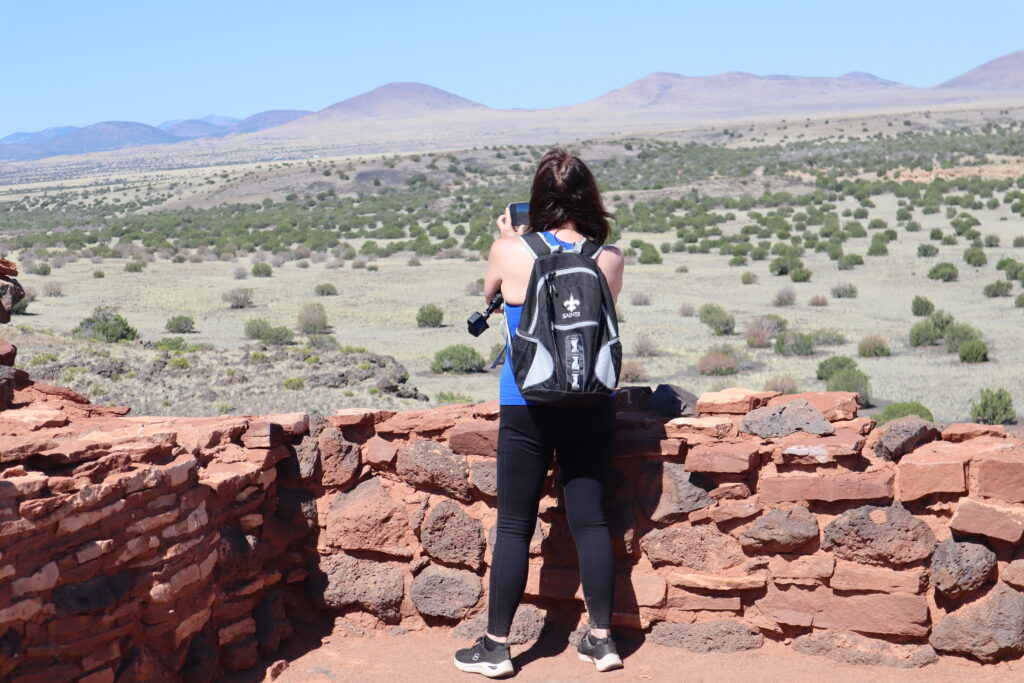
Indigenous Communities
The Sanagua, Cohonina, and Cayente Anasazi inhabited and flourished in this area. They grew crops, hunted wild game, and made pottery. The Anasazi were living on the water from the Wupatki Springs, unfortunately, which is now dry. They had to learn to “dry garden”. They enjoyed a diet of corn, beans, squash, seeds, and grains, plus fresh meat from hunting.
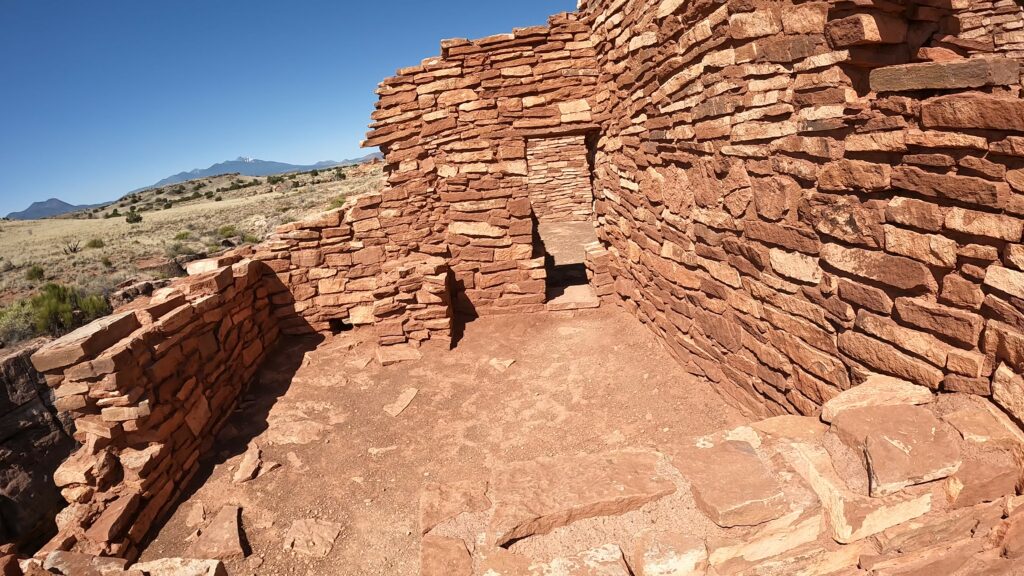
The area around Sunset Volcano Crater has been home to indigenous people for thousands and thousands of years. They were here even before the volcano erupted way back in 1085. The Hopi and Zuni elders, who are wise and respected members of their communities, still share stories about what it was like to witness the amazing fireworks when the volcano would explode. Can you imagine that? It must have been quite a sight!
A Littered Landscape
The area around Sunset Volcano Crater is covered in old volcanic cinder and spatter cones. What are those, you ask? Well, cinder cones are formed when volcanic ash and rocks pile up around the volcano’s vent, creating a cone-shaped hill. Spatter cones, on the other hand, are formed when blobs of lava are ejected from the volcano and harden into cone-shaped structures.
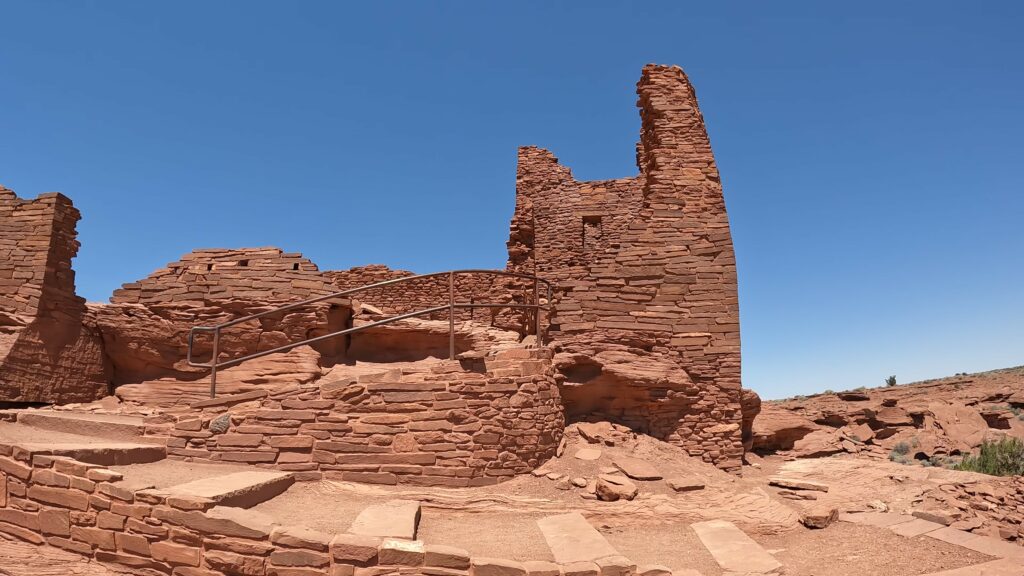
The stratovolcano at Kachina Peaks is a few miles to the southwest. None of these volcanic remnants have erupted in almost a thousand years, but the ruins at Wupatki National Monument were occupied before those last eruptions and then rebuilt a few decades after.
Where is the Wupatki National Monument Located?
The park is located about 30 miles north of Flagstaff. So, if staying in the Flagstaff, AZ area or driving to or from Page, AZ or other location on AZ Hwy 89, the turnoff is to the East on Hwy 89. Sunset Crater is nearby so can bundle both attractions together.
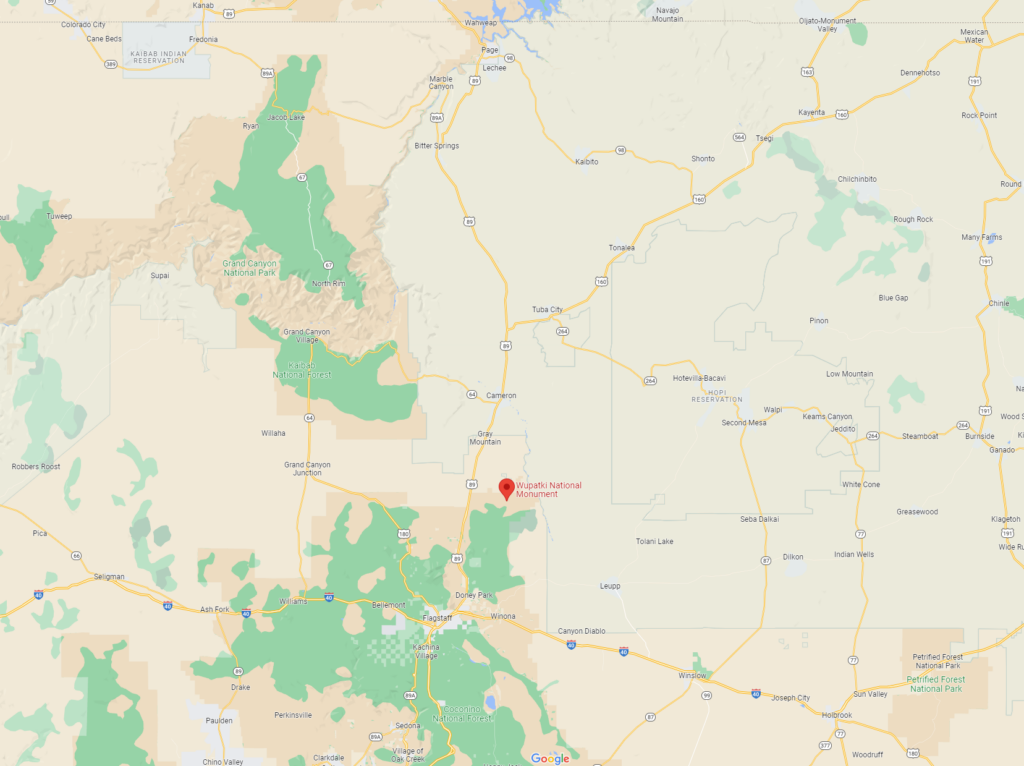
Pueblos
Lomaki and Box Canyon Pueblos
The first stop we made in the park was the Lomaki and Box Canyon pueblos. The first pueblo we come upon is one of the Box Canyon pueblos. This pueblo only has a few rooms but is perched upon the rock at the edge of the box canyon.
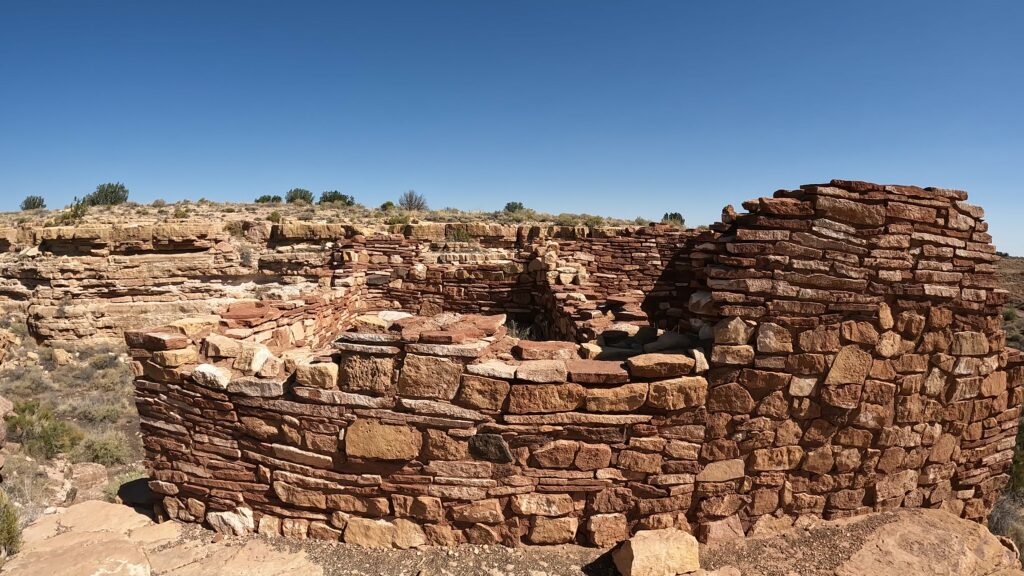
Plan for 30 – 45 minutes to explore these pueblos.
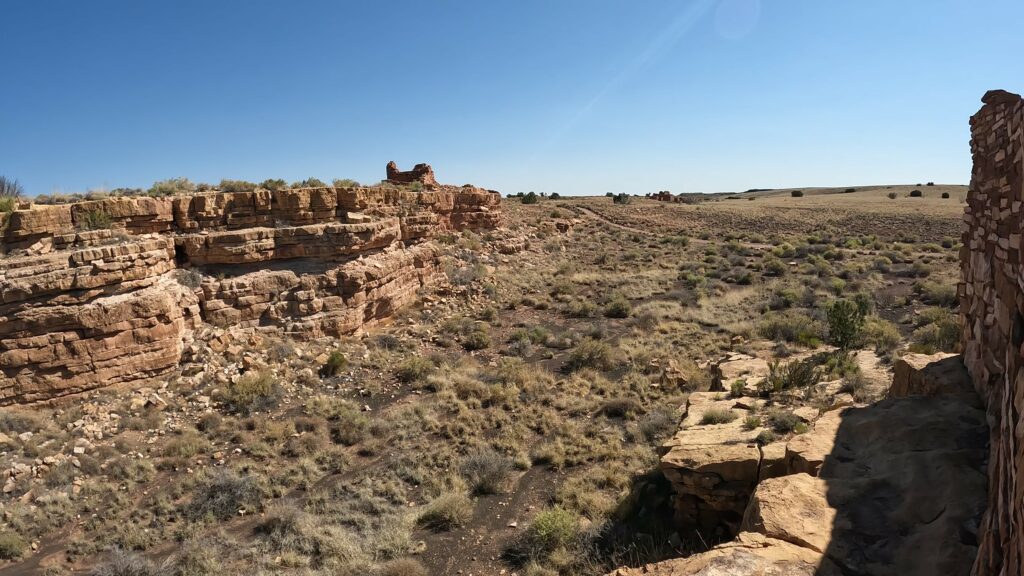
Click to jump to a post covering the Lomaki and Box Canyon Pueblos in more detail. You will also enjoy the Wupatki National Monument video on our YouTube channel.
Citadel and Nalakihu Pueblos
The next stops on the tour were the Citadel and Nalakihu Pueblos.
The Citadel is significantly larger than the Box Canyon and Lomaki pueblos but about half the size of Wupatki Pueblo. It has around 50 rooms and is strategically located on the top of a small cinder hill overlooking a limestone sinkhole. The walls were built to follow the outline of the hill and were constructed with both sandstone and basalt, which is volcanic rock.
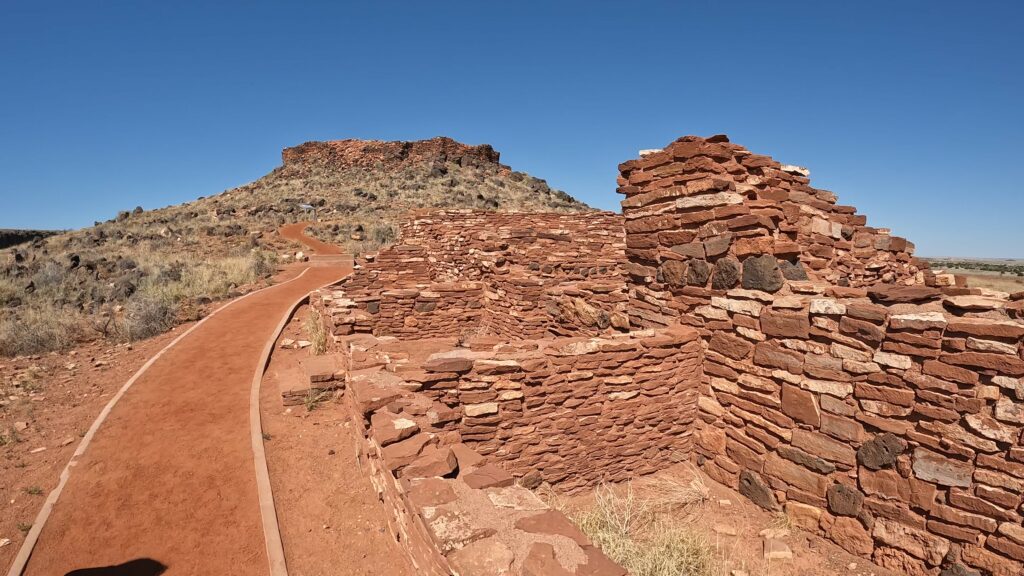
Plan to spend at least 30 minutes to 45 minutes exploring this pueblo.
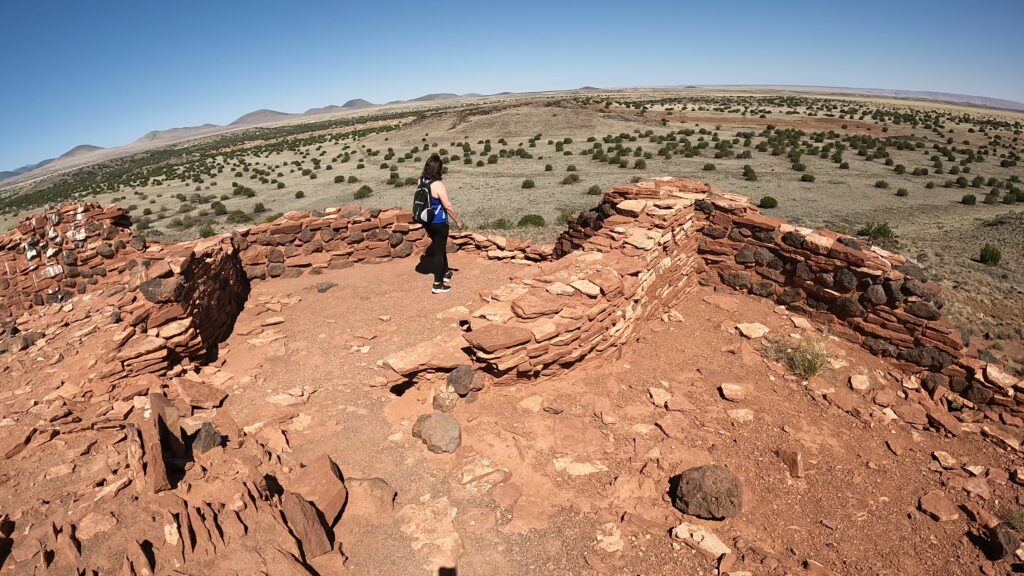
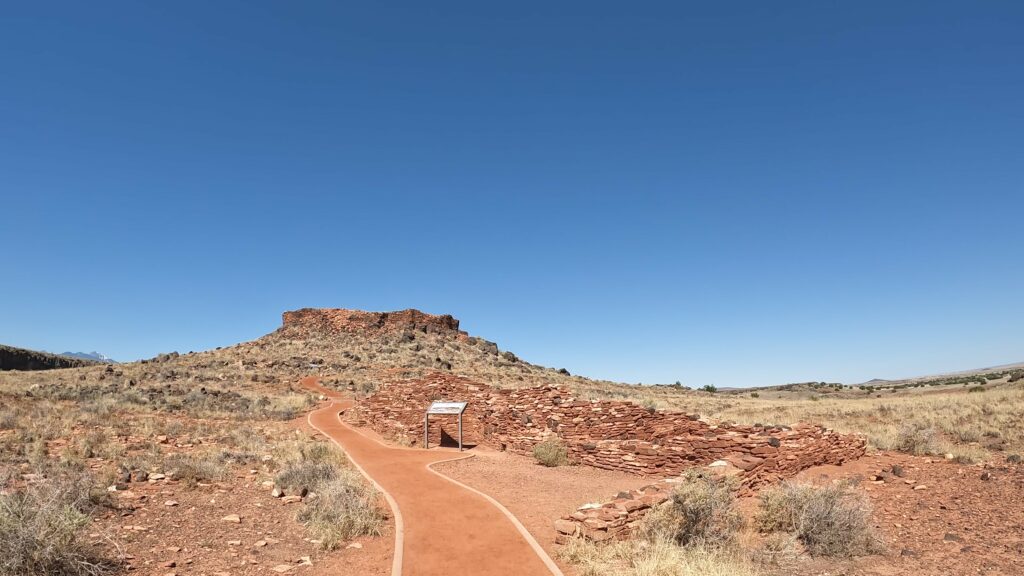
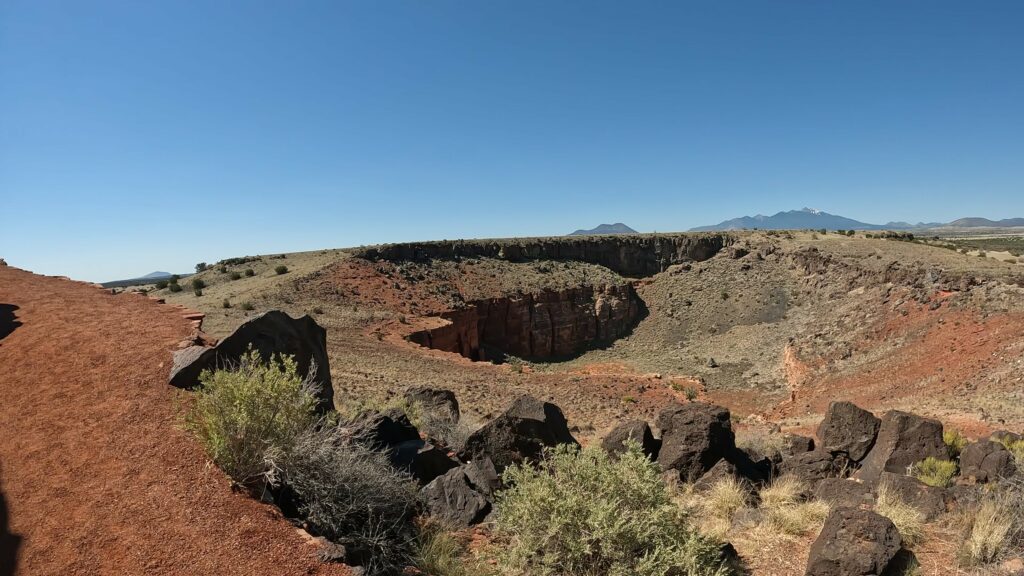
Click to jump to a post covering the Citadel and Nalakihu Pueblos in more detail. You will also enjoy the Wupatki National Monument video on our YouTube channel.
Wupatki Pueblos
The next stop on our Wupatki National Monument tour is the grandest of all, the Wupatki Pueblo site. Wupatki means “long-cut house” in the Hopi language. It is a multi-story Pueblo dwelling comprising over 100 rooms, a kiva, which is a community room, and the northernmost Hohokam-style ball court ever discovered in North America, creating the largest building site for nearly 50 miles.

Plan to spend at least an hour or more exploring this pueblo complex and the nearby Visitor Center.
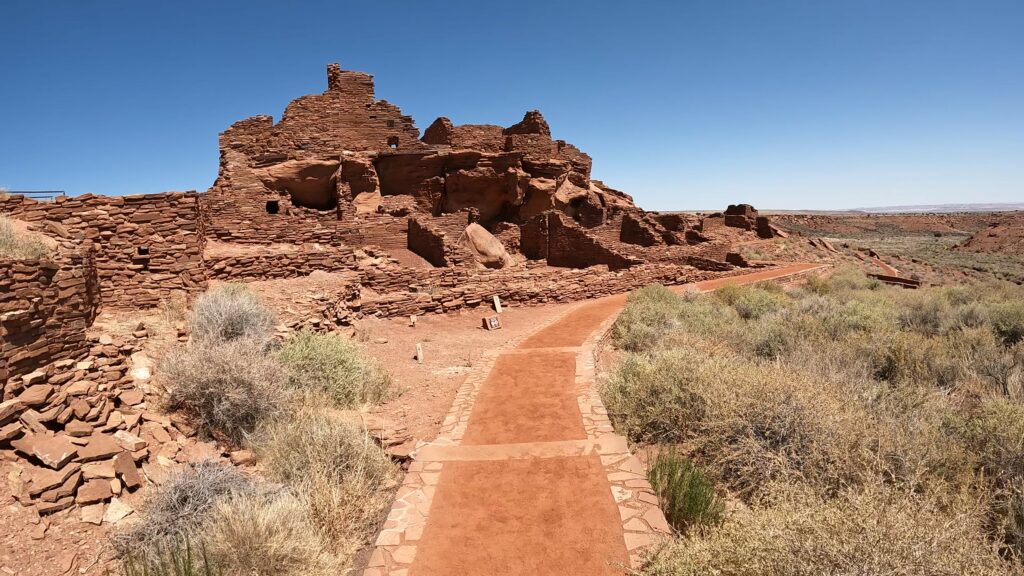

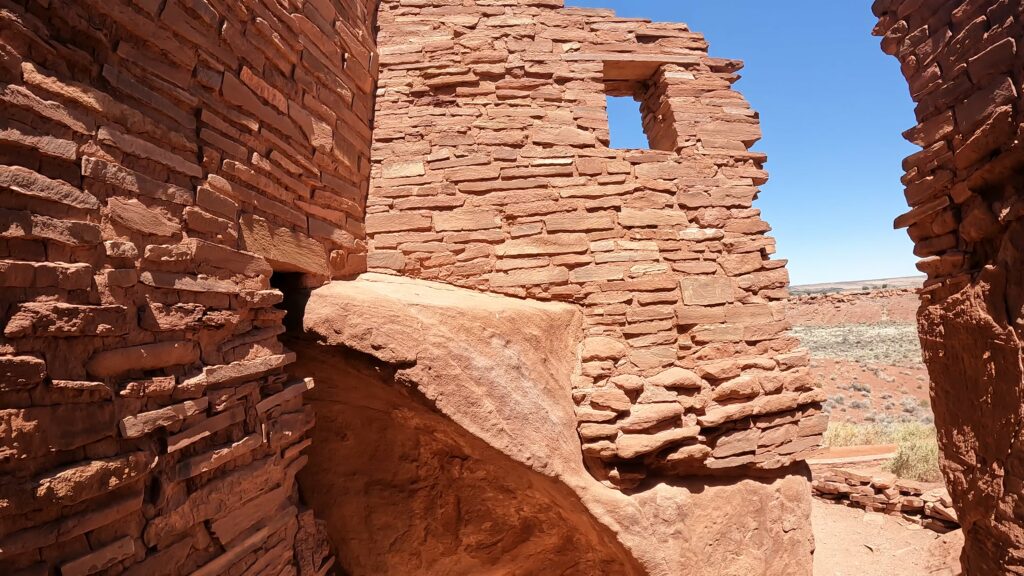
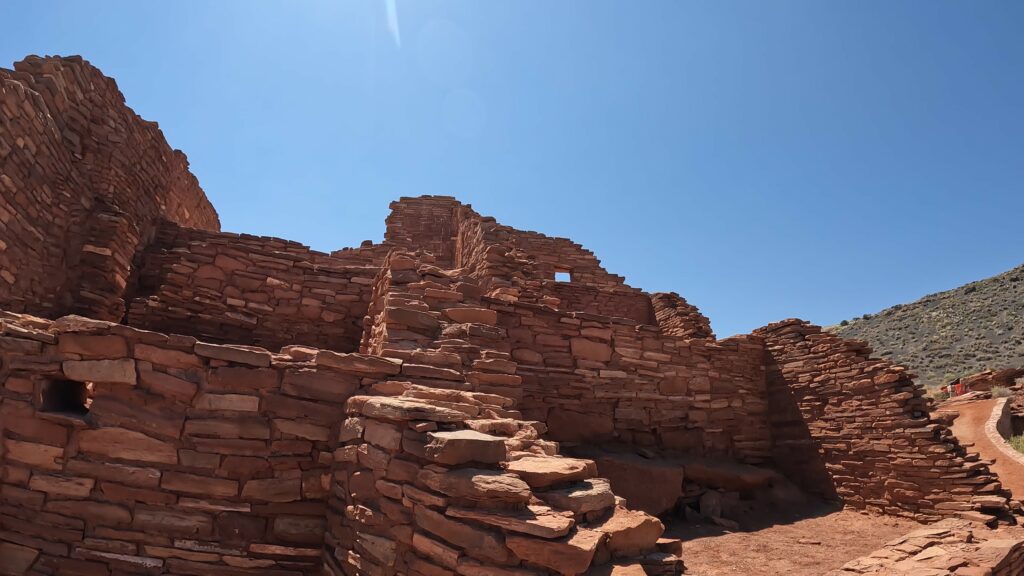
Click to jump to a post covering the Wupatki Pueblos in more detail. You will also enjoy the Wupatki National Monument video on our YouTube channel.
Wukoki Pueblos
The Wukoki Pueblo is located in eastern part of the Wupatki National Monument. The ruins were built on a rock atop a hill. The three-story structure has the appearance of a fortress with a great view of the surrounding landscape. And the name Wukoki means big house. A short parapet wall once surrounded the plaza. It is one of the best-preserved ruins in the monument and not undergone any reconstruction.

Plan to spend at least 30 – 45 minutes exploring this pueblo
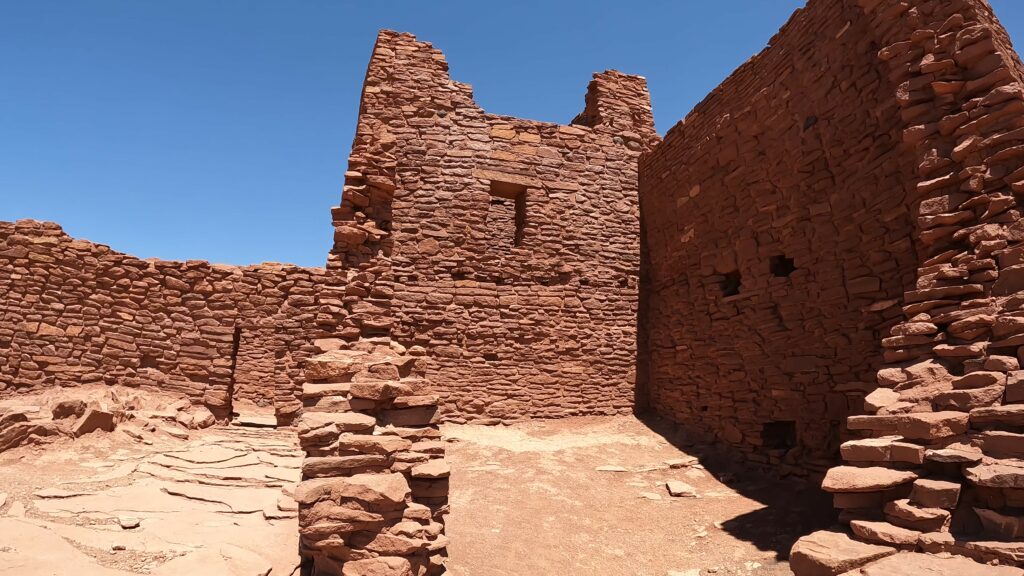
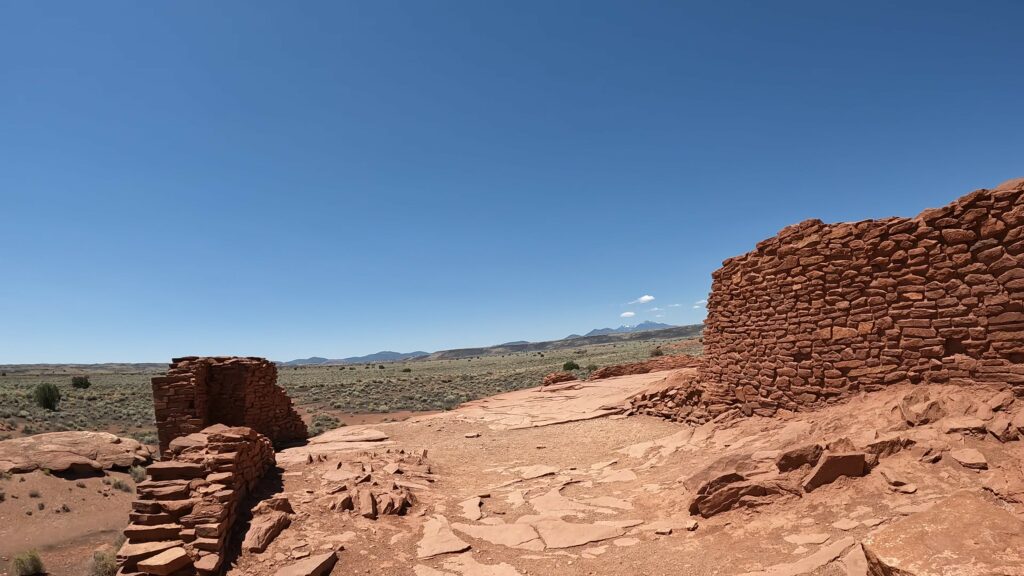
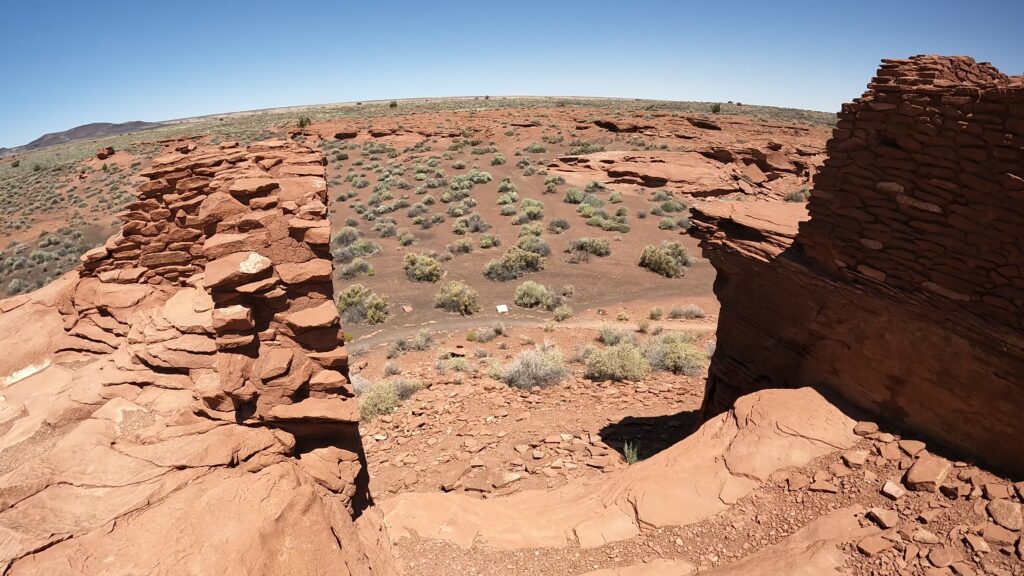
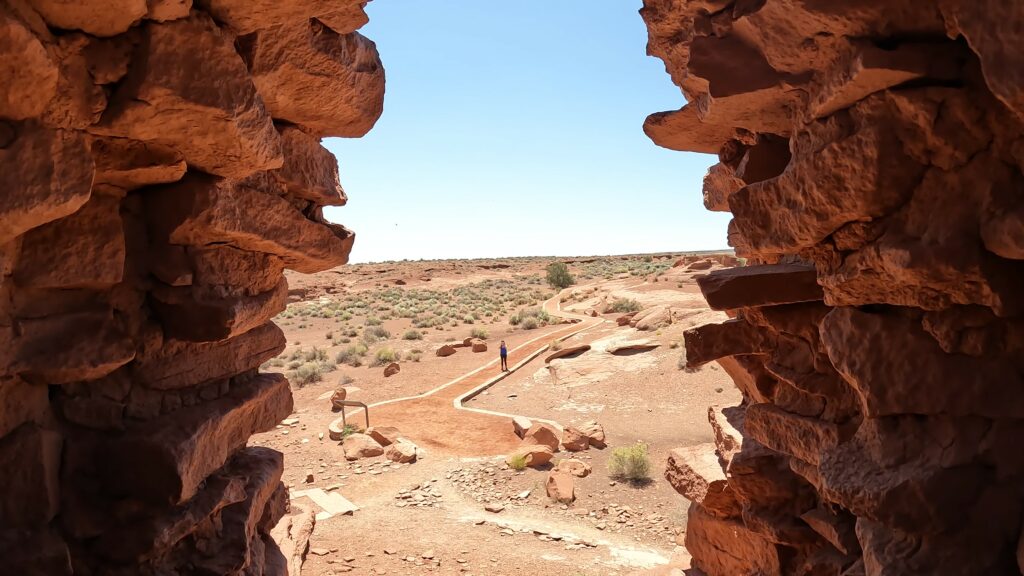
Click to jump to a post covering the Wucoki Pueblo in more detail. You will also enjoy the Wupatki National Monument video on our YouTube channel.
Visitor Center
The Visitor Center is located adjacent to the Wupatki National Monument pueblos.
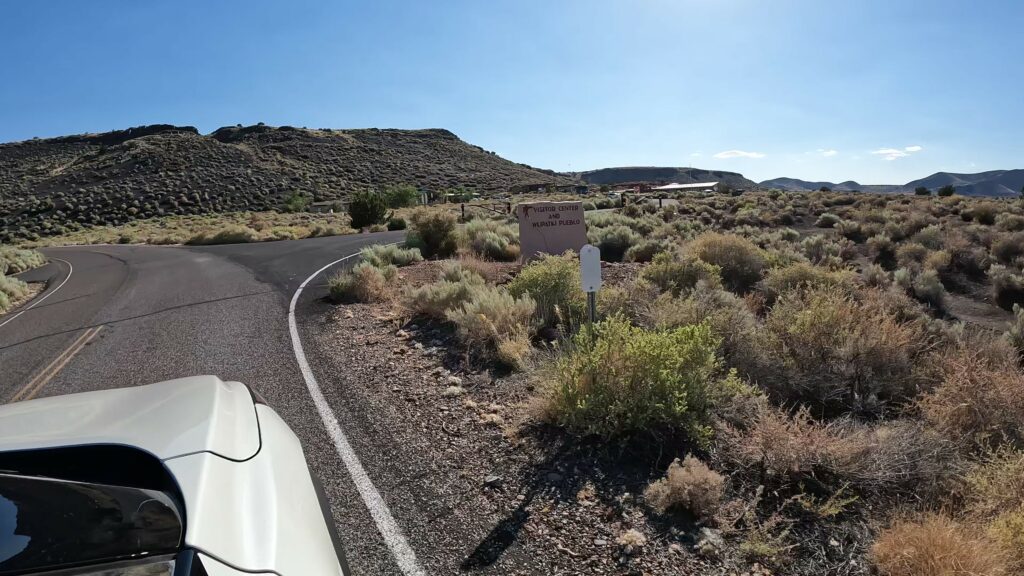
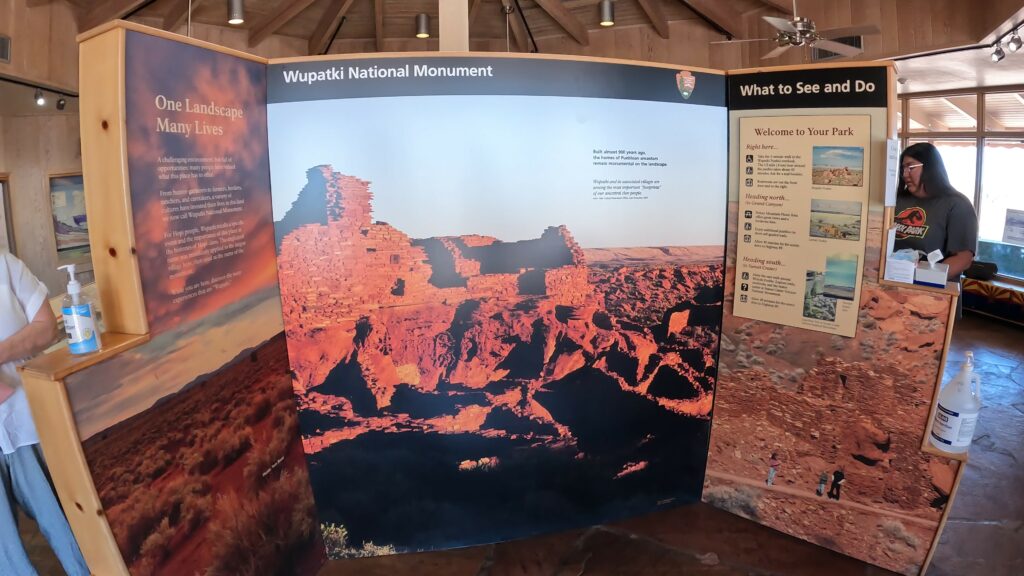
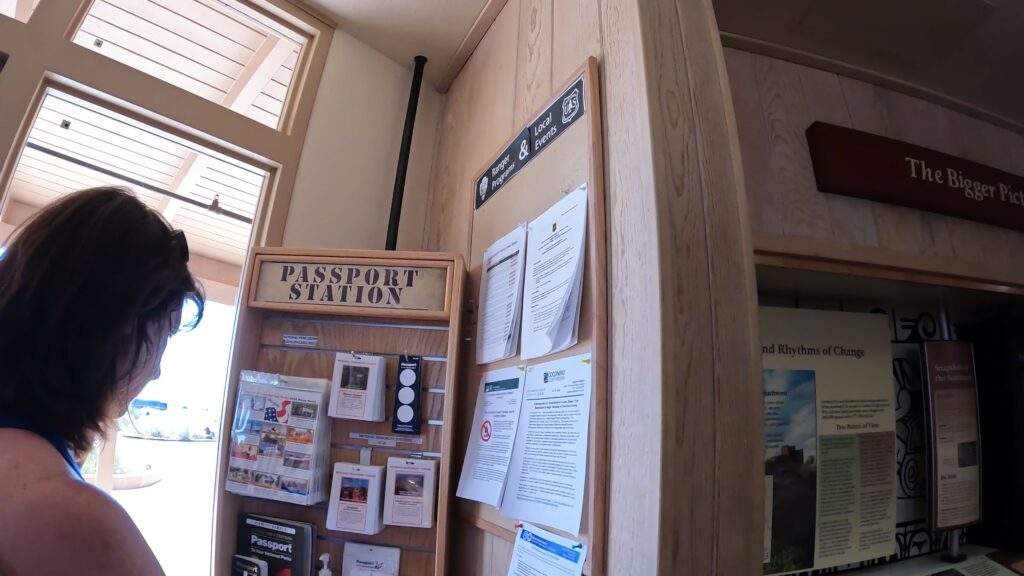
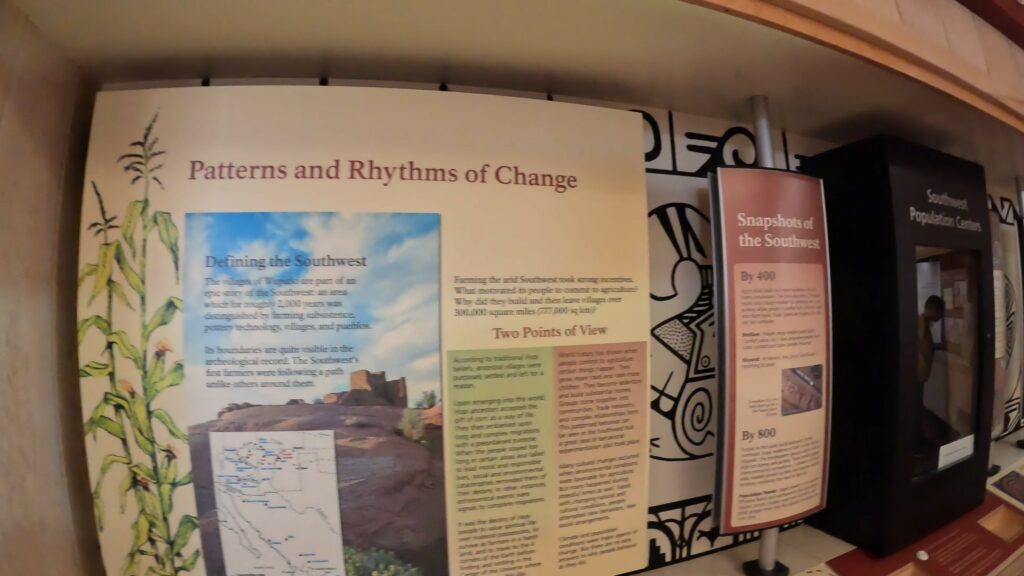
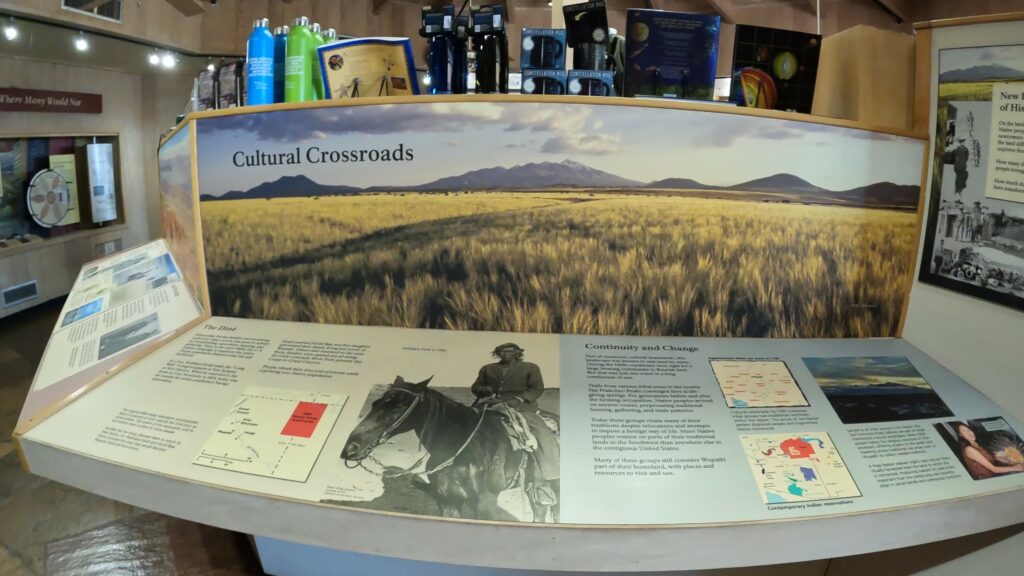
Erin and I love history and we love being outdoors. Visit Wupatki National Monument as it is well worth the visit. You will thoroughly enjoy the history and the short hikes. The bonus of going to the Wupatki National Monument is the fact that the Sunset Crater National Monument is right next door. So you get two National Monuments in one shot.
Check out our post on the Sunset Volcano Crater National Monument. Again, package these two together.
Click below to see a more detailed post on each set of pueblos:
If you like this content, I know you’re really going to enjoy the Montezuma Castle and Well National Monument posts, the Abandoned Anasazi Inn Gray Mountain Murals, and all the epic Arizona trip, along with other destination videos we have to help inspire you and plan your next epic trip with your significant other(s).

Leave a Reply